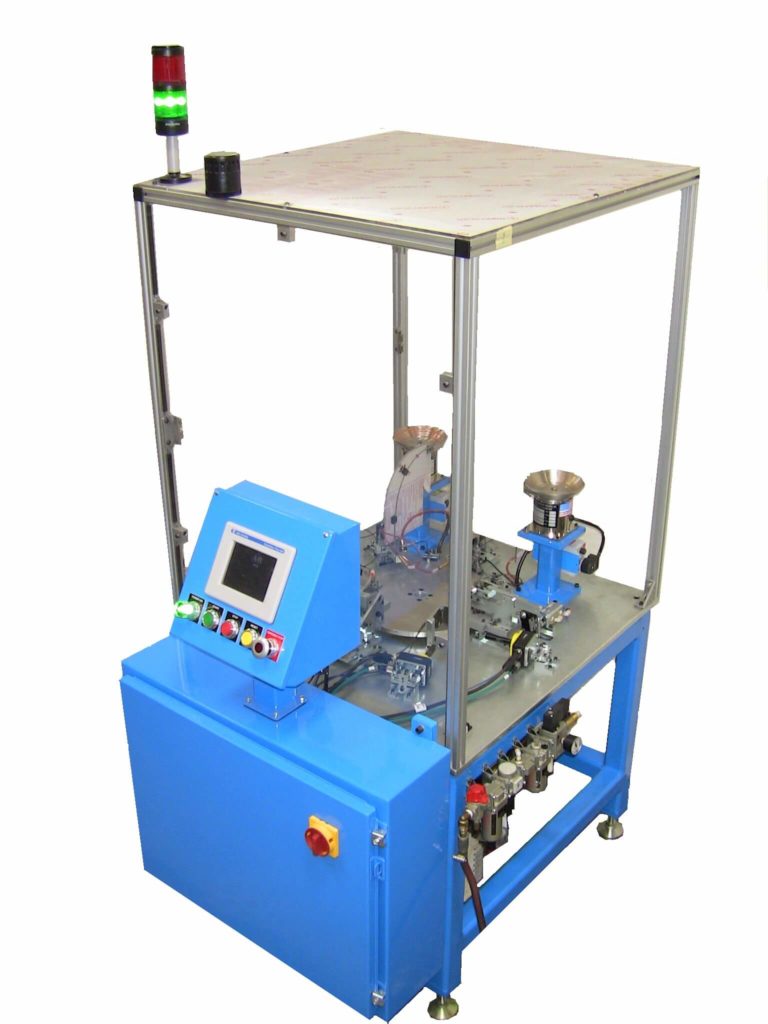Contact – High Speed Assemble, Crimp and Bulge Machine
- Home
- Electronics
- Contact – High Speed Assemble, Crimp and Bulge Machine

This machine assembles a cable bundle type contact into a tube, crimps the tube onto the contact and performs a vision inspection. Tubes are loaded into the nest of the rotary indexer by the actuation of the loader. The loaders are designed to cam lock and elevate on two separate cams. These will be easily adjustable to allow the cam to release and lock onto the tubes while in the down position. The head will lower, releasing the cam to allow the tube to drop down into the nest with the next one following down on top of it, but still in the area of the cam lock. The cam lock then holds onto the next tube and the head then elevates, leaving the bottom tube in the nest and the next tube still up into the head for placement into the next nest.
The cable bundle is fed and deposited into the previously placed tube by the same type of operating head and feeder bowl.
The bottom of the head has a tapered hole to drop down over the tube to align it perfectly to the cable loader so that there is a perfect transfer of the cable down into the tube. The cable is placed and the head elevated back up just as the tube loader operates. ADAPT AUTOMATION can build the forming and crimping head to the exact design of your current device. This will allow you to remain storing replacement parts that will fit on this station on all of your machines that match the best design.
Once the assembly is crimped, two vision cameras inspect the assembly from two angles. This gives a reasonable verification that the parts are crimped together properly and that the bulge in the cable is within tolerance. The information is used to place a disposition on the assembly and it will be either accepted or rejected at the specific stations. All acceptable assemblies are removed and placed into a chute that directs them to a bulk storage container. The nest will be designed to lift the part up slightly to allow the pick off head more area to grab onto. This actuation occurs from underneath the index table and doesn’t interfere in any way to the indexing of the machine. All remaining assemblies or parts in the nest are removed and discarded into a reject container.
